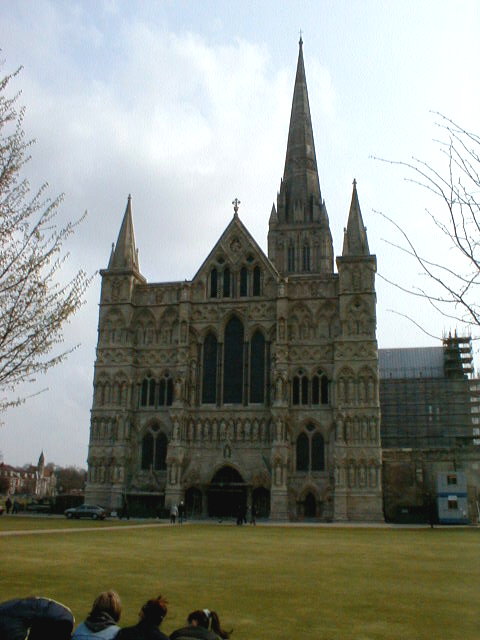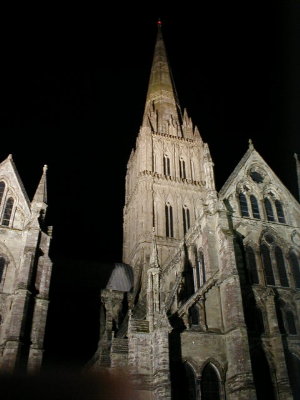Cathedrals and Country Churches
Introduction
For many centuries of British history, a tremendous amount of human ingenuity, artistic endeavor,
and money were channeled toward the church. Cathedrals and innumerable
churches in town and country stand as the result of this investment.
Visiting them is the easiest way to get in touch -- literally -- with the
products and the spirit of the medieval age, regardless of one's religion.
Whenever we visited a village or town, we made a point
of looking into the church. It is wonderful that most
are usually unlocked during the day, despite the risk
of burglary. There is always something worth seeing: carved stone and wood... memorials for local gentry or the heroes of past wars... initials inscribed in window-glass centuries ago... last month's parish newsletter. We tried to always leave a donation in the money-box,
as sometimes very small congregations are the custodians of ancient buildings
and precious artworks and need the money for their preservation.
Just a couple of examples made it onto film:
Shipton Church
We have fond memories of taking a relaxed drive through Shropshire and
coming upon a beautiful, very old stone church by the roadside, with daffodils
and daisies blooming among the gravestones. This is next to a manor
house of the same name (privately owned). The church was unlocked
and silent. It was cool inside, and we spent a little while looking
at the stonework and the old memorial plaques on the walls. The bell-ropes
were at hand, but after a moment of temptation I behaved myself and resisted
pulling them.

Salisbury Cathedral
Having spent the better part of three days in Salisbury, we saw a lot of
the cathedral there. Built between 1220 and 1258, it is the only
cathedral built in a single style, called Early English Gothic. The
404-foot spire is the tallest in England. Its weight has caused the
massive stone pillars that support it to bend visibly -- a sight to behold.
Visiting on a Sunday, we saw two services here. It was wonderful
to hear choral music reverberate through that vast space. As you
sit in the nave, the East Window at the far end of the cathedral, an abstract
composition made up of innumerable pieces of glass, mostly cobalt blue,
invites meditation. Usually I am not a fan of modern art, especially in such a setting, but this window is something special.
The cathedral possesses the earliest working clock in the world (ca.
1386), and one of the four original copies of the Magna Carta.

Forward to Country Walks
Back to the top of this page
HOME to our top travel
page




